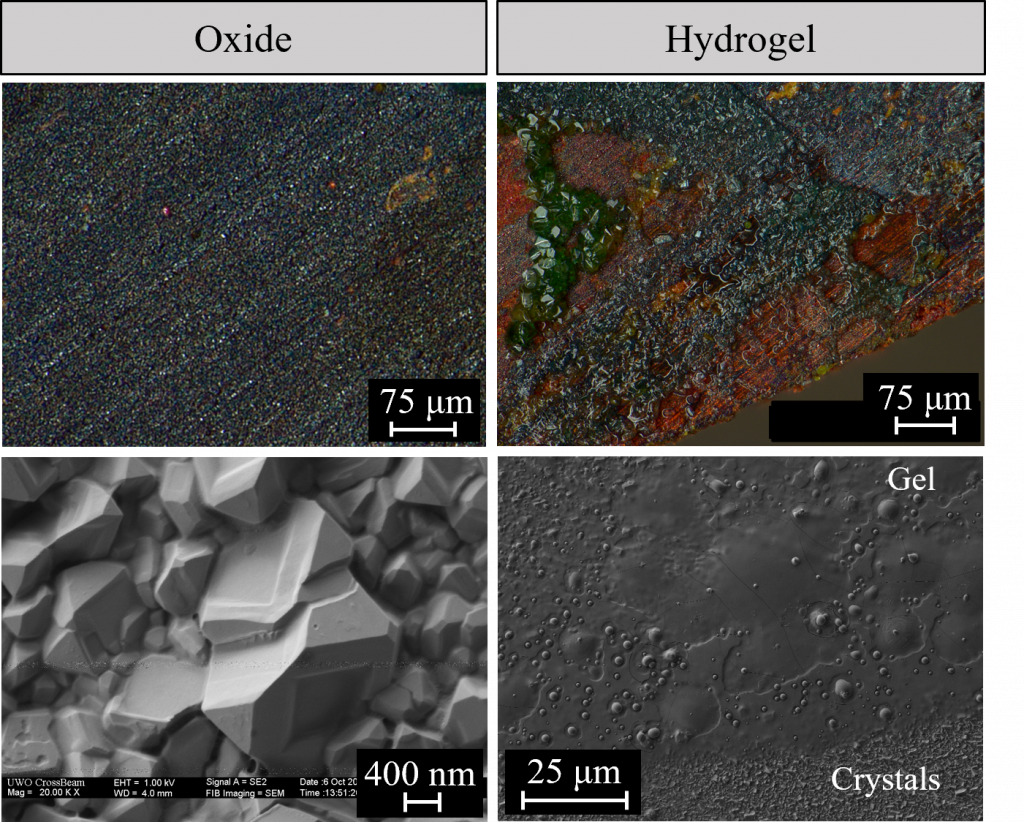 The Electrochemical Society hosted Dr. Peter Keech’s live webinar, “The Role of Electrochemistry in Canada’s Plan to Manage Nuclear Waste,” on November 30, 2022. Dr. Keech took audience questions during a live Question and Answer session following the presentation. He kindly answered in writing questions not answered during the broadcast. Find these responses below.
The Electrochemical Society hosted Dr. Peter Keech’s live webinar, “The Role of Electrochemistry in Canada’s Plan to Manage Nuclear Waste,” on November 30, 2022. Dr. Keech took audience questions during a live Question and Answer session following the presentation. He kindly answered in writing questions not answered during the broadcast. Find these responses below.
Registration is required to view the webinar.
Q&A
During electroplating the copper, what kind of process control is needed to make the copper coating smooth and fully dense?
The properties of the coating are controlled by a combination of the bath parameters (chemistry/pH, temperature, etc.), voltage/current inputs (input values, pulsed versus continuous, etc.) and movement of the solution (flow, position of anodes/cathodes, etc.). Through a series of calculations and tweaks during both trials and large-scale production runs, we have been able to obtain high quality, dense coatings with suitable surface finishes.
During the coating production, are there difficulties in getting good adhesion to the steel? How about the two forms of copper?
Both copper produced using pyrophosphate and acid copper solutions have been applied with a very high adhesion to the steel. In general, high adhesion of the first few layers of copper is accomplished in what we call a strike solution, which is different from the main plating solution. The electrochemical process during application of the strike can be a little different, in that electrochemical efficiency may not be as high (i.e., some current is “wasted” producing hydrogen, for example, rather than plating copper, and deposition rates can be low). However, the strike layer application is generally brief (minutes, not days), so the trade-off of obtaining high adhesion is worth adopting the use of the strike.
Do you have galvanic corrosion with the copper coating on top of the steel?
The copper coating completely encases the steel, which is separately welded prior to completion of the copper. As a result, the internal environment of the container does not see copper, while the exterior environment does not reach the steel. This avoids galvanic coupling between steel and copper; although we have done some testing of artificially damaged coatings to help support the safety assessments of various failure scenarios.
Is there any corrosion of the inside of the container, specifically of the weld? Does this create embrittled steel?
The Nuclear Waste Management Organization of Canada (NWMO) has done significant work on the internal corrosion processes that may occur, and demonstrated that any residual water or moist air that may be contained within the container after closure will not negatively affect the steel (and particularly the weld) with respect to safety. Very little corrosion is possible, even when conservative assumptions are used about how much water/moist air may be trapped within a container. General corrosion is greatly favoured versus localized corrosion for the carbon steel interior.
What kind of microbial corrosion can occur on the container? What microbes are present?
In principle, microbes can be present in the rock/water in the repository environment, although measurements demonstrate that they tend not to be present in the intact rock that is desired for the repository. More microbes can be put into the repository within the clay materials of the sealing system. However, because the bentonite clay that will be used is highly dense, there is neither sufficient water nor space for the microbes to grow within the region near the container. Thus, biofilms on the container cannot form. For the assessment of a maximum corrosion allowance, we conservatively presume microbes can grow remotely from the container, and that they may produce corrosive species that will interact with the container. The predominant calculation allows for production of sulfide from sulfate-reducing bacteria.
What is the effect of heat on the container that results form the radioactive decay of the used nuclear fuel? Can it cause the coating to delaminate?
The heat produced from radioactive decay will dissipate into the rock gradually, but may elevate the temperature of the container, depending on spacing. The current design spaces containers so that the maximum surface temperature is 100°C, so this is too low to affect the container or cause delamination of the copper.
Considering oxygen and oxide versus Sulphur and sulfide: Oxygen is the oxidant so Sulphur is the oxidant, not sulfide, right?
In the early stages of the repository, the assumption is that oxygen trapped during the emplacement of the containers will be the primary oxidant. Even though many reactions will consume oxygen, mass balance calculations are used to bound the maximum corrosion damage. Later, when the repository is anoxic, bisulfide is the primary species to cause corrosion, as it can react with metallic copper to produce copper sulfide (oxidizing copper) and hydrogen gas (from the reduction of either the hydrogen in bisulfide or water that is adsorbed along with the bisulfide).
What are the remaining critical corrosion issues? You mentioned localized corrosion will continue to be an area of focus, but what else is important?
The NWMO will continue to research oxic corrosion, corrosion from radiation-induced processes (such as production of hydrogen peroxide), and anoxic corrosion (including via bisulfide or in high chloride)—and any of the other topics I discussed. Each of these topics contributes to our understanding of the safety of the used fuel container, and we want to continue to increase confidence in our understanding of these processes. The emphasis of this talk on localized corrosion was to illustrate the depth of our research in one of our selected fields; the reality is that we have many researchers investigating each topic. In addition, the topic aimed at illustrating how non-uniform corrosion should be considered within each topic (hence the rationale for the depiction of the radiation-induced corrosion and the occasional non-uniformity produced therein).
When did the “recent” switch in batch chemistry referenced in Slide 16 occur?
The NWMO has been exploring multiple chemistries for electrodeposition for many years and produced coupons using acid copper as early as 2012. However, the decision to switch over our large parts to acid copper conditions was made more recently (i.e., over the last several years) during our production.
Where did the manufacturing of the containers described in slides 16 and others take place? Was this done by a third party vendor?
During the past several years, the electrodeposition has been done by more than one third party acting under contract for the NWMO. Both large and small parts have been produced in Mississauga, Canada, and the United Kingdom; the latter location was originally selected because of some joint interests by the UK nuclear waste program.
Are there published papers reporting on the work packages on copper corrosion listed on Slide 21? Where are those papers available?
Over the past decade, we have produced many papers on the corrosion work. Some of the key references were listed; however, we recently published a comprehensive review of the maximum expected corrosion damage in Progress in Materials Science (Open Source) at https://doi.org/10.1016/j.pmatsci.2020.100766. Most of the work is referenced therein, but I am happy to follow up with specific work.
Is there a paper reporting on the NWMO studies in radiation-influenced corrosion described in slides 24 and 25? Where is it available?
We recently provided a review of the radiation processes affecting the copper-coated container at https://www.mdpi.com/1362632. Within this document, you can find the references to the data I showed, and also a comprehensive listing of other work in this area. However, the specific data was developed by Balsam Ibrahim as part of a Master of Science program at Western University (see https://ir.lib.uwo.ca/etd/3315/).
Based on your modeling, what is the approximate life of the copper-plated capsule when it fully disintegrates? How many years do you predict for catastrophic failure?
We have many corrosion models, but the general time to failure ends up as a function of how much bisulfide will be present, since that is the long-term failure mechanism. Our models tend to be conservative since the results will impact safety of the design, but when we consider the realistic scenario of how much bisulfide will be present in the host rock, it is not unreasonable to predict a lifetime of many million years. One probabilistic study is here: https://doi.org/10.1016/j.nucengdes.2019.110202
Have you considered use of other metals instead of copper? More inert metals?
Material selection is routinely reviewed, but copper is typically considered the most suitable owing to several factors. It is thermodynamically stable in anoxic water, is an effective thermal conductor, resists localized corrosion, and is very effective to adhere to steel in the copper coating program. While gold or silver may be more resistive to oxic corrosion, these processes produce very little damage to the copper corrosion barrier, and these metals (particularly gold) tend to be more prone to scratching/damaging than copper.
The generic objective of partitioning and transmutation strategies is to improve nuclear waste management by minimizing nuclear waste mass, reducing the heat load and the quantity of potential radiotoxic isotopes to be disposed finally in a geological repository. Kindly shed some light on this.
At the risk of oversimplifying, the concept of partitioning and transmutation often refers to the separation of actinides from used nuclear fuel, and burning them up in a fast reactor while also generating power. This concept has been around since the start of the nuclear program, but not currently adopted for technical, economic, and/or proliferation issues. It will still yield fuel wastes that will be heat generating and contain long-lived fission products, which will require disposal in a facility like a deep geological repository.
In practice, are the copper containers also treated with a surface treatment (like paint)?
There is no subsequent treatment beyond copper. Considering the very long service life of the containers, any organic materials in paint will eventually break down, and could function as food for microbes; thus these are not desirable in the repository.
Is there any reported possibility of stress corrosion cracking? Is there any study or report on this?
Stress corrosion cracking requires a combination of a material susceptible to cracking, sufficient tensile forces, and suitable environment (i.e., for electrochemical potential and containing SCC agents). While copper can be made to crack, it requires the presence of species such as acetate or nitrite, etc., which will not be present in this environment during the oxic period when potential would be suitably high. Mechanical forces will not be present at all during the oxic period, and for this container, its shape mitigates the development of tensile forces completely, except for a few isolated conditions where the buffer system will wet unevenly.
I notice you ran some experiments for several years—are these experiments, or any like them, ongoing? What is the longest time scale on which you all plan to run experiments?
Some ongoing experiments have been going since 2012 in the underground labs, while others in the lab have now crossed the eight-year mark. We plan to run some of these for very long times (i.e., more than 10 years, and perhaps more than 20). The decommissioning of experiments will be done when it makes sense from a research point of view, or perhaps to support the various licensing activities we will be doing.
What is the interaction at Cu-Steel interface, alloy? Is this understanding important to further improve the anti-corrosion of Cu electrodeposition?
There is virtually no mixing of the copper and steel at the interface, as demonstrated in an early thermodynamic study performed by researchers at McGill University, and in practice during our copper coating development.


